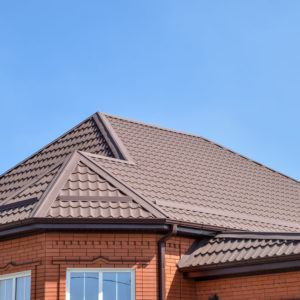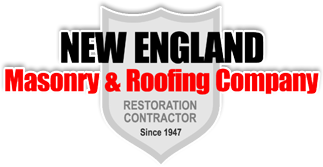Category: Restoration
3 Things You Never Knew About Building Restoration

If the idea of buying an old house in less than perfect condition and of restoring it is appealing to you, you need to be prepared not only to work a lot and to put in lots of money into the process, but you will need to be ready for the surprises that old buildings usually come with. Here are some things that you should know about building restoration:
- The roof is always a critical component – the roof being the topmost layer of your building and the layer that is the most exposed to the elements, the condition of the structure will determine the overall condition of the building. If the walls of your old building are structurally strong, it is a good idea to start the restoration process with the roof to avoid any deterioration caused by water leaking through an incomplete or severely damaged roof.
- Masonry restoration – this part of the process can be quite tricky. If you see an old wall that you want to restore or refresh, you need to be prepared that the wall might not be as strong as it looks after all. If you already have the architectural design for the restoration, it is a good idea to leave some room for changes – old walls might need an approach that is different from what you had in mind for them.
- Maintaining the style of the facade is important – depending on the neighborhood where your building is located, you might be required by the authorities to preserve the initial style and features of the architecture.
It’s important to work with someone in the restoration service that has experience and knows how to handle all the details, look to https://www.nemasonry.com/masonry-restoration-services/ .
Why Building Restoration Has Become So Popular

Building restoration Connecticut offers has become increasingly popular in recent years because professional workers are more thorough and cost-efficient regarding the whole restoration process.
Before restoration, the condition of the building has to be evaluated correctly to determine the extent of the damage. The evaluation should also include background information such as original drawings, maintenance history, repair records, and former building managers’ advice. There should also be a holistic approach to the investigation, including elevation drawings and documented visual and close-up observations. In addition, finding hidden defects and assessing the materials should also be highly prioritized.
Field and laboratory testing can be destructive or non-destructive to the building itself. Brick, water, and adhesion testing can be done to evaluate the composition of the materials. Samples can be removed, and specific equipment can be used to determine the location of anchors within the building structure.
Building restoration options aim to solve the root problems and should be chosen by making informed decisions and considering project budgets and schedules. One such option is using waterproofing membranes that can last from fifty to ninety years and provide resilience through the proper installation of layers.
All in all, restoration can prolong the life of any building. It can lower the costs of energy bills, so it is a popular and pocket-friendly solution for commercial and residential property owners.
How Masonry Restoration Will Improve the Look of Your Building with Minimal Work

Appropriate solutions for masonry restoration depend on the types of wall systems that the buildings were designed with. Mass masonry wall systems are the oldest typology. Their practical design lasts thousands of years and is based on brick and stone. One such example is the Parthenon in Athens (Greece). However, between the 1890ʼs and the 2nd World War, the system transitioned from mass walls to steel skeleton frame construction that, eventually, became ineffective when buildings became taller and elevators were introduced. The transitional system is a hybrid of masonry and steel, and it is less resistant to moisture. It was replaced by the curtain/barrier system, whose main structure is steel or concrete with no internal system for managing moisture. Ultimately, this one was replaced by the cavity system, which is a structure of steel, concrete, or CMU (concrete masonry unit) designed to manage water properly.
There are many repair and masonry restoration options for all systems, including horizontal surface protection and material and system repairs. Horizontal surfaces, in particular, are easy to repair or restore because they require minimal work and can significantly improve the aspect of the building. They are usually restored with silicone sealant (lasting up to ten years). Silicone sheeting can also be used as added protection and sheet metal (copper or stainless steel) installed for long-term preservation.
Does Building Restoration Usually Require Special Tools or Materials?

The benefits of commercial building restoration include cost-effectiveness, tax exemption, and the prolonging of the roofʼs longevity. Suppose the repair is done when the first signs of decay show, the costs can be lowered significantly. The main problems signaling the requirement of building restoration begin with: granule loss, a deteriorating ceiling, leaks are causing dark spots and wet insulation. Building restoration almost always starts with the roof and has to be considered in relation to the costs of labor and materials as well as the time needed for everything to dry.
Special tools and materials are usually required, but the end result always pays off because it entails reducing additional building expenses or energy bills and the removal of tear-offs or patch jobs. However, before the restoration is done, some factors have to be considered, including estimating costs and possible additional expenses. The type of roof must also be taken into consideration. For instance, the single-ply or metal-modified bitumen is less difficult to restore and, therefore, fewer tools are needed. Moreover, the roof type also dictates the restoration system: TPO, PVC, EPDM, Butler MR – 24 SS, or asphalt emulsion-based roofing all require specialized tools. That is why it is best to work with an expert when repairing or replacing your roof.
How Building Restoration Can Save You a Lot of Money

No matter if you have a big or a small building, the cost of its renovation can seem relatively high. But there are ways in which you can actually save money instead of overspending. For one thing, you need to create a budget and stick to it.
At the same time, it can be a good idea to allocate a part of your savings for unexpected expenses. Thus, you can save about 10% for unexpected necessities, but this sum can vary, of course, depending on your specific requirements. For example, you could run across unexpected water damage, or electrical wiring that isn’t up to code. Those are issues you will have to address, and you can when you budget for unexpected expenses.
Another essential detail is to take your time simply. Although, when you have enough money for it, it may be tempting to restore the entire building all at once, it certainly is wiser to take things one step at a time and rely on the excellent advice of building restoration professionals.
Paying cash can be another good way to save a lot of money. Another good idea is to find the best deals available for the essential parts. But you should find the right type of materials to save money in the long run while also prolonging the life of your building.
Not moving your building’s plumbing system can be another effective way to save money on its restoration project.

















